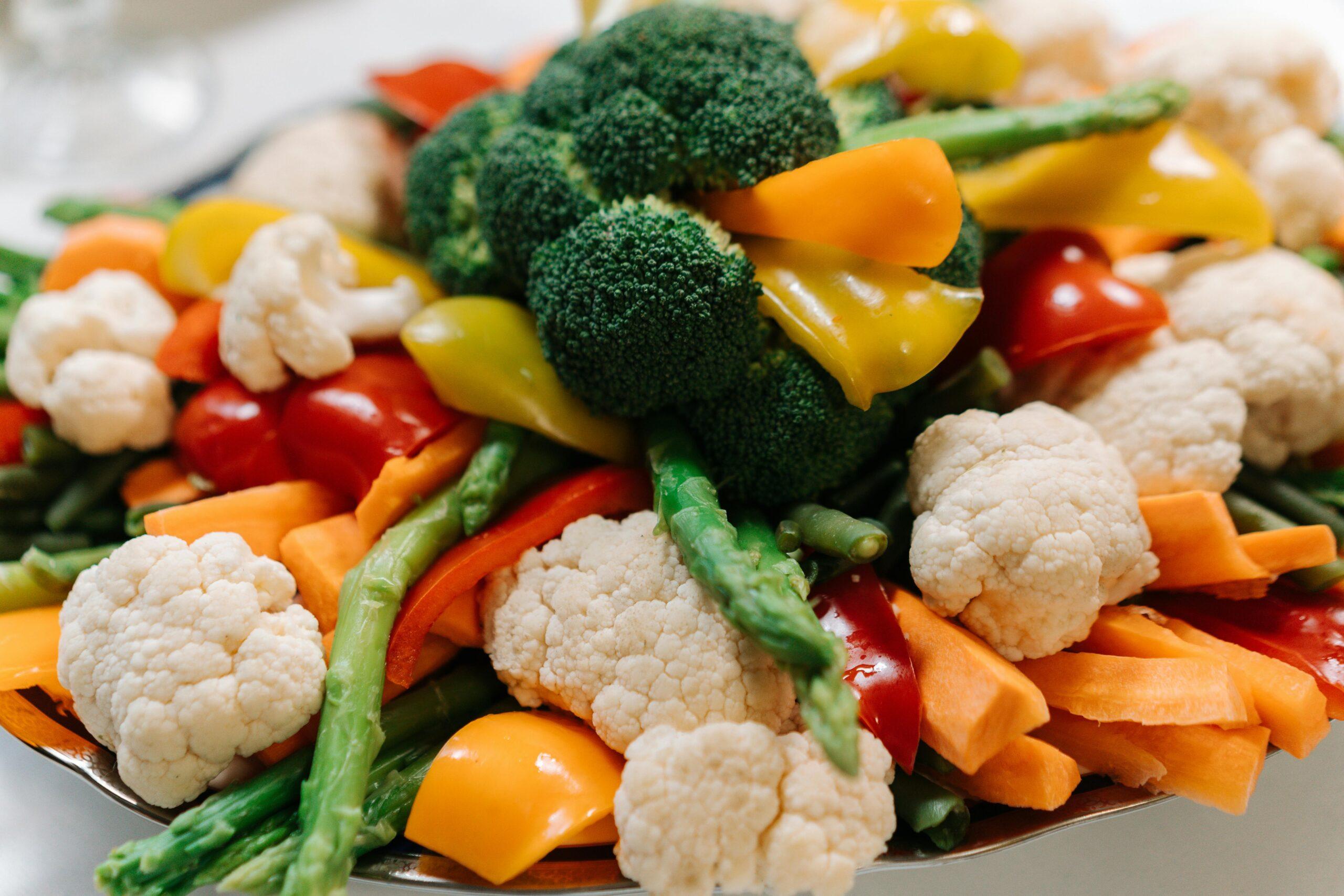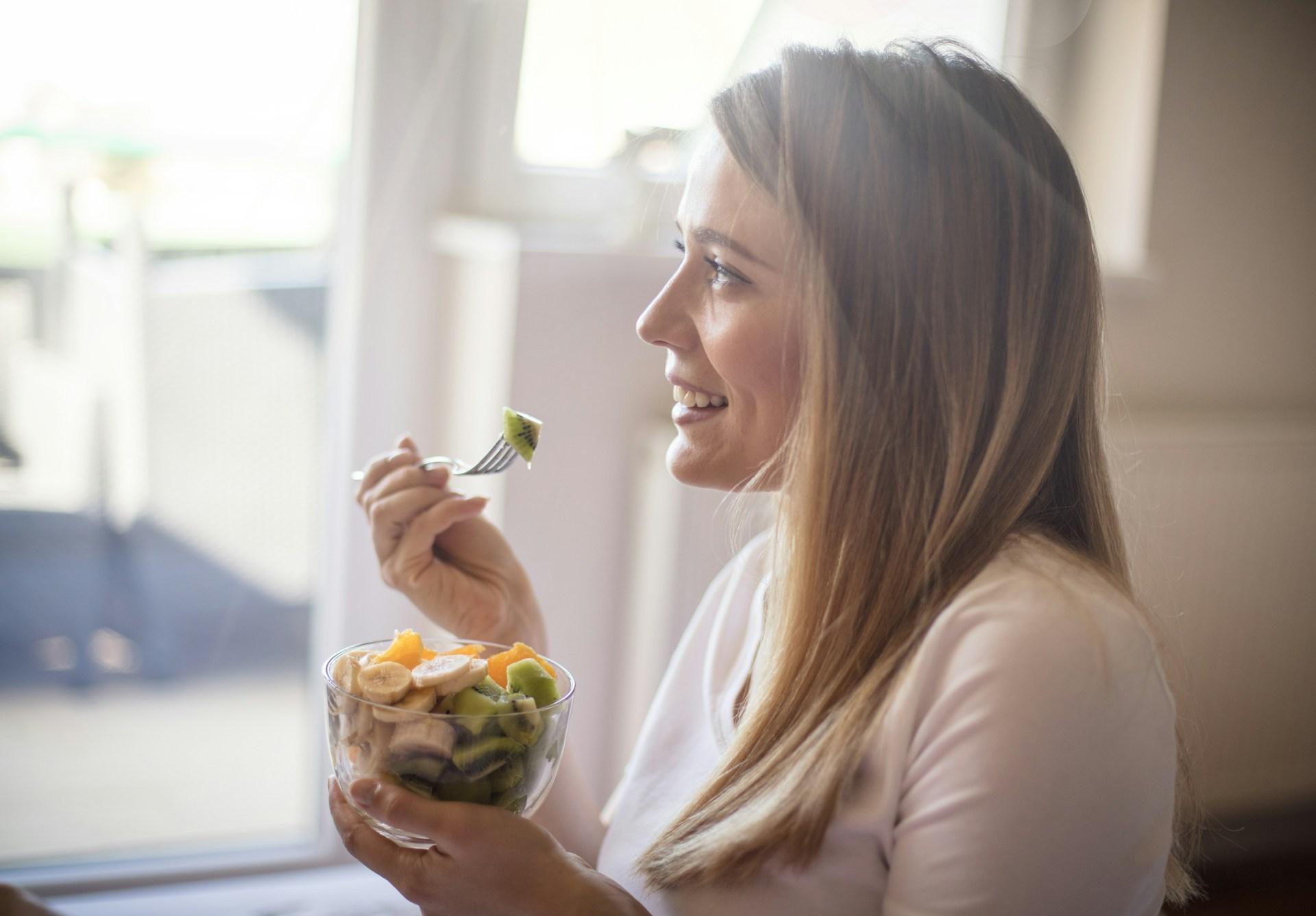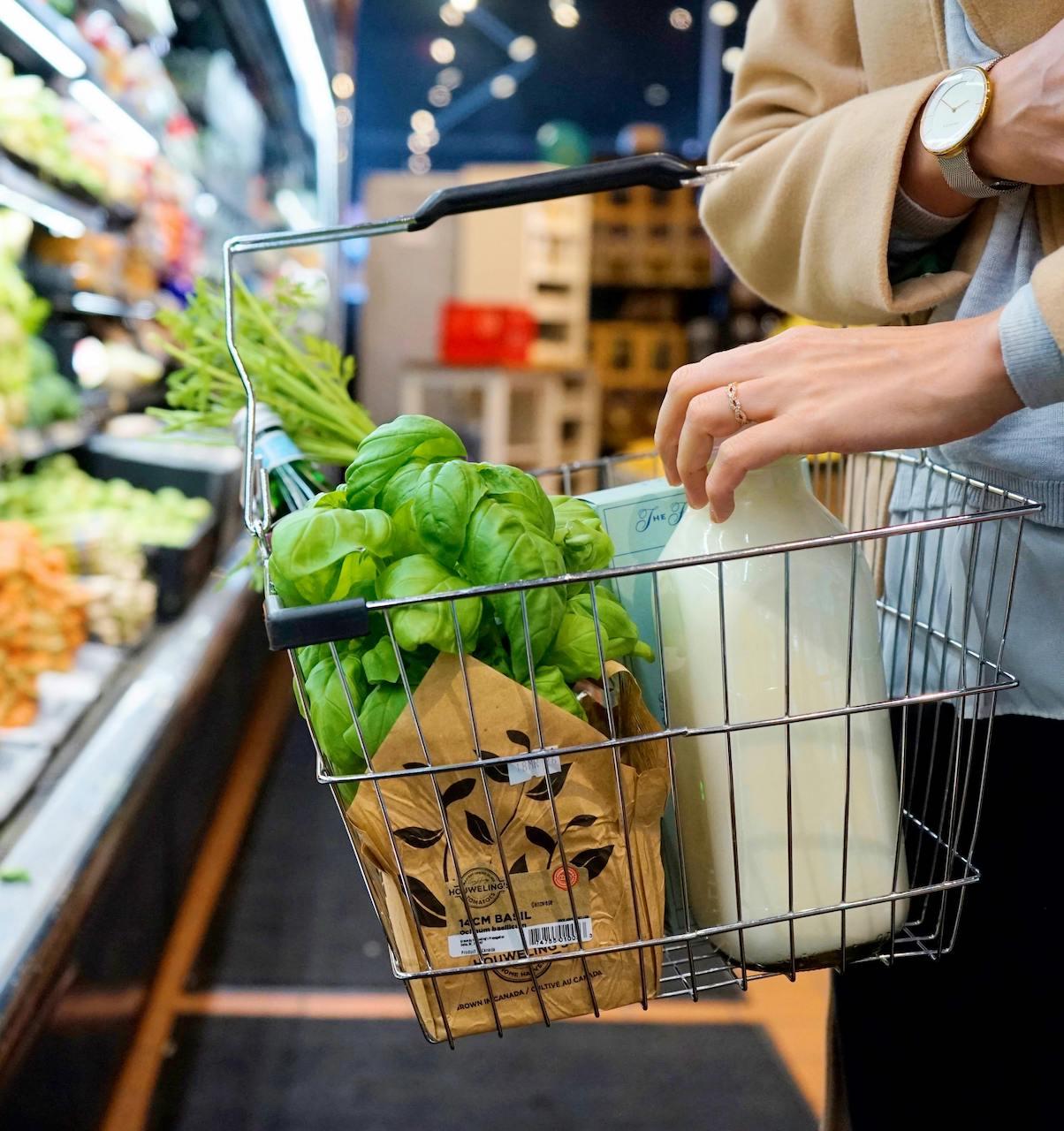When it comes to achieving long-term health goals, starting with small and approachable steps is usually best. Unrealistic or restrictive goal setting can lead to stress, disappointment, and ultimately surrender. Looking for a simple jumping off point? Try doing something we’ve all heard about since childhood: eat more vegetables.
Adding more vegetables to your plate is a foundational step towards building a healthy diet, as they are rich in health promoting vitamins, minerals, fiber, and antioxidants. Not only do they provide essential nutrients, but they are also a great way to add volume to your plate, making for a more satisfying meal or snack.
While it may sound simple, we know that adding more veggies can be challenging for a variety of reasons. Here, our dietitians weigh in on easy, delicious, and approachable ways to incorporate more vegetables into your diet.
Why do we need to eat vegetables?
As registered dietitian nutritionists (RDNs), we tailor our advice to each patient’s unique needs. That being said, we have one universal piece of guidance: eat fruits or vegetables with every meal and snack.
Vegetables are packed with essential nutrients and vitamins that support overall health and reduce the risk of cardiovascular disease, type 2 diabetes, obesity, and other chronic conditions. They are full of fiber, which helps improve your digestive and gut health, lower your cholesterol, and improve sugar control. The antioxidants in vegetables combat harmful free radicals in your body, reducing the risk of inflammation. Fiber can also help increase satiety, making your meals and snacks more satisfying.
As you plan your meals for the week, we recommend saving at least half of each plate for veggies or fruit. Go for what we call “pigment power”— the more colorful the variety, the better! Eating a variety of vegetables helps ensure you get a range of vitamins, minerals, and antioxidants. In addition, take this opportunity to eat with the seasons. You can find reasonably-priced and delicious seasonal organic vegetables at your local farmer’s market or in the produce aisle of your grocery store. If you’re not sure what’s in season, check with your registered dietitian or look it up online prior to menu planning.
What’s the easiest way to get all my servings of vegetables?
This is probably not the first time you’ve heard that vegetables are good for your health. But according to data from the CDC, only about one in ten adults meets their recommended servings of vegetables each day. For many people, it’s a matter of convenience, taste, and accessibility. You’re more likely to go for fast food or processed snacks if you’re not sure how to prepare a certain vegetable or don’t have a store with fresh veggies nearby. Learning how to create delicious tasting vegetable dishes is also a key component to getting more of them on your plate.
That’s where registered dietitian nutritionists (RDNs) come in. We’re eager to demystify healthy eating and give you creative tips for positive lifestyle changes. Here’s how Culina Health RDNs get their 5+ servings each day.
1. Plan ahead and ingredient prep
A busy lifestyle can make it tempting to reach for convenient foods at meal times. That’s why we recommend planning ahead and taking advantage of pre-chopped and frozen vegetables. You’re more likely to bolster your meal with fiber-rich veggies if you know it will only take seconds to do so.
Intimidated by the prospect of meal prep? Just pre-chop vegetables that you know you’ll use throughout the week. Ingredient prep is more feasible than complete meal prep for many. Batch prep proteins, grains and starches, and veggies to mix and match in meals.
Go through your refrigerator at the end of each week and freeze the pre-chopped vegetables you haven’t gotten to. That way you’ll always have a base for soups, stir-fries, and smoothies on hand, and you won’t waste the produce.
Speaking of frozen vegetables, “one of the most underrated products in the grocery store is frozen spinach.” says RD Mallory Onaindia. “Think about how much fresh spinach you would need to wilt down to get that same amount. It’s so easy to incorporate into recipes and lasts so long in the freezer.” Stock up on frozen spinach, kale, peas, and other vegetables harvested and frozen at their peak of ripeness. “Add them to the things you already eat, like scrambled eggs, rice, and tuna,” recommends RD Tanya Bernard. This is an inexpensive and waste-free way to include veggies in quick meals and snacks.
2. Add veggies to make crave-worthy meals healthier
Fad diets often encourage users to stay away from certain “bad” foods on their road to better health. At Culina Health, we know that restricting desired foods is ineffective and can lead to frustration, binging, and shame. RD Elizabeth Odvarka advises her patients to stop worrying about what they have to limit, and instead focus on what they can add to meals and snacks—such as vegetables, fruits, protein, and fiber—to get the most nutritional bang for their buck. Craving pizza for dinner? Instead of depriving yourself, try a cauliflower pizza crust. You can make one yourself by ricing cauliflower in the food processor and adding eggs and flour, or find premade crusts in the frozen food section. You can blend extra vegetables into the pizza sauce for even more nutritional impact before adding your favorite toppings.
Culina Health RD Melissa Connor recommends adding vegetables at breakfast, where they are often forgotten. She loves to eat her morning eggs with a roasted vegetable blend or hash; this starts the day right with tons of energy-boosting nutrients and fiber for increased satiety. Try making a green smoothie with frozen spinach or adding washed leafy greens to an egg sandwich or wrap for an easy, on-the-go meal.
You don’t have to trade your favorite sandwich for sautéed kale if you tend to go out for lunch. Just think about adding a side salad or cooked vegetable to your usual order. The same goes for homemade lunches; take advantage of your pre-prepped or frozen cut vegetables to add nutrients with no extra fuss. Try adding some baby carrots and sliced cucumbers as a side to your sandwich.
Focus on multi-use vegetables that are easy to add to a variety of dishes. “Buy a large container of spinach and set a goal to go through it by the end of the week,” says RD Molly Cleary. “Add it to scrambles and omelets, smoothies, salads, grain bowls, pasta, couscous, risotto—literally anything.”
3. Remember vegetables at snack time
There are so many delicious veggie-centered snacks; it’s just a matter of planning ahead so you’re ready when the snack attack hits! You can get an extra serving of vegetables by adding them to dips like guacamole and hummus, blending them into smoothies, and grating them into healthy baked goods.
Pack pre-prepped veggies like baby carrots and sugar snap peas for when you’re out and about, along with some fat and protein like nuts or seeds. “When hunger hits,” says RD Jennifer Thompson “you have something to help bridge to the next meal/snack without having to run to a convenience store or vending machine.”
4. Let your kids in on the veggie goodness
We know how hard it can be to plan healthy meals for kids, especially when you have picky eaters. Let’s be honest, young children have been throwing their broccoli on the floor since time immemorial and it’s not always a battle worth fighting. Though watching your lovingly prepared dinner get pushed across the table (or fed to the dog) is an experience that unites most parents, it’s important to keep trying to feed your kids veggies. They are among the best foods for gut health, which is crucial to growing bodies. In addition, the fiber and nutrients in vegetables will help your kids maintain their energy and focus as they go throughout their day.
One way to get your kids on board with vegetables is to incorporate them in soups, sauces, dips, and baked goods. This will help the whole family get their vitamins and minerals without a lot of fuss. But it may also be beneficial to work raw vegetables into your family’s day-to-day snack routine, so your kids can start appreciating the taste and texture. RD Elizabeth May urges families to make a veggie box with baby carrots, sugar snap peas, mini cucumbers, and mini peppers at the beginning of each week. “Throw it on the table when you’re making dinner,” May recommends. This will tide little ones over without filling them up too much and keep them busy while you finish cooking.
For healthy school lunch ideas, think about adding small amounts of vegetables to your childrens’ “safe foods” (i.e. the ones they always eat), like peas in their macaroni and cheese or chopped peppers on pizza bagels. Try these foods out at home first so they look familiar when they show up in your child’s lunchbox.
Many children love to be helpers, so you might also want to include them in your vegetable prep. They can help you pick the “best” produce at the store, and can even help you wash and chop the vegetables. This will give them ownership over these healthy ingredients, which may make them less likely to balk come meal time.
5. You’re never too old to eat your vegetables
Nutrient-dense vegetables become more important than ever as we age. This is due to their fiber content, vitamins and minerals, and antioxidant properties, all of which reduce the risk of obesity, cardiovascular disease, neurodegenerative disease, cancer, and other health conditions.
If you’re a senior citizen or caring for one, try prepping your vegetables as soon as you get them home from the store. Display them prominently on your refrigerator shelf to help you prioritize vegetables when cooking and snacking. It’s too easy to forget about foods stored in the back of a crisper drawer! You might also tap into the many benefits of gardening to grow your own vegetables and herbs.
We always recommend prepping your vegetables by roasting them with a little olive oil and seasoning to maximize flavor and incorporate healthy fats. You can also use a steamer basket if you prefer a softer texture. Steaming vegetables preserves their nutrients better than boiling does, and it generally only takes a couple of minutes to prepare perfectly steamed side dishes.
Recipe: Try this Greek-style veggie omelet with avocado toast
Veggie omelets are one of our favorite meals because they’re balanced, quick, and easy, all while packing a nutritional punch. We love a Greek-style omelet for its balance of tart and savory flavors and its high iron content (hello spinach!) This recipe can be adapted to use fresh or frozen spinach, red onion or shallots, and whatever veggies you have on hand along with feta cheese. You can also pair your omelet with some crowd-pleasing avocado toast. This balance of vegetables, fat, and carbohydrates will give you lasting energy for whatever your day has in store.
- 3 mushrooms, sliced
- 1 t chopped shallot
- 1 t chopped garlic
- 4 grape tomatoes, halved
- 1/2 cup baby spinach
- 2 tsp olive oil
- 2 eggs
- 1/2 oz feta cheese
- 1 slice whole wheat bread
- 1/4 avocado
- Salt and pepper to taste
Heat 1 tsp olive oil in a small skillet over medium heat. Add mushrooms, shallot, garlic, tomatoes and spinach. Sauté until all veggies are tender, about 5 minutes, stirring occasionally. Once cooked, transfer veggies to a bowl and set aside.
In the same skillet, heat 1 tsp olive oil over low heat.
In a bowl, whisk the eggs. Pour into skillet. Allow egg to cook for about 2 minutes, without stirring. Add the cooked veggies to one side of the egg. Sprinkle the feta cheese on top. Using a spatula, flip the other side of the omelet over the side with veggies, to create a half moon omelet shape. Cook for another 2 minutes, until the eggs are fully cooked.
While the omelet finishes cooking, toast 1 slice of whole wheat bread. Once toasted, top with half of an avocado, using the back of a fork to mash. Top with salt and pepper to taste.
Work with a virtual registered dietitian nutritionist
Consider meeting online with one of our registered dietitian nutritionists for more help incorporating positive diet and lifestyle changes. At Culina Health, our team of RDNs is dedicated to helping you achieve your nutrition and overall health goals through virtual telehealth sessions. Whether you have a specific health condition, particular dietary needs or preferences, or simply want to make the most of seasonal eating, we are ready and waiting to support you.
One-on-one virtual nutrition care sessions with Culina Health registered dietitian nutritionists are covered under most health insurance plans. During sessions, your virtual dietitian will help you understand how food affects your body, provide you with healthy and delicious seasonal recipes, and work with you to create a personalized plan for better health. Book a session today!







